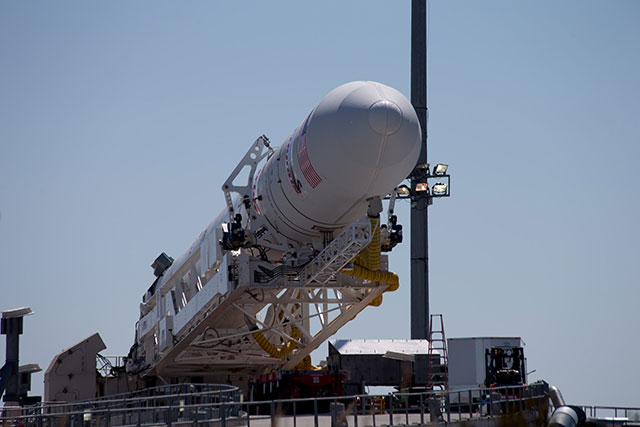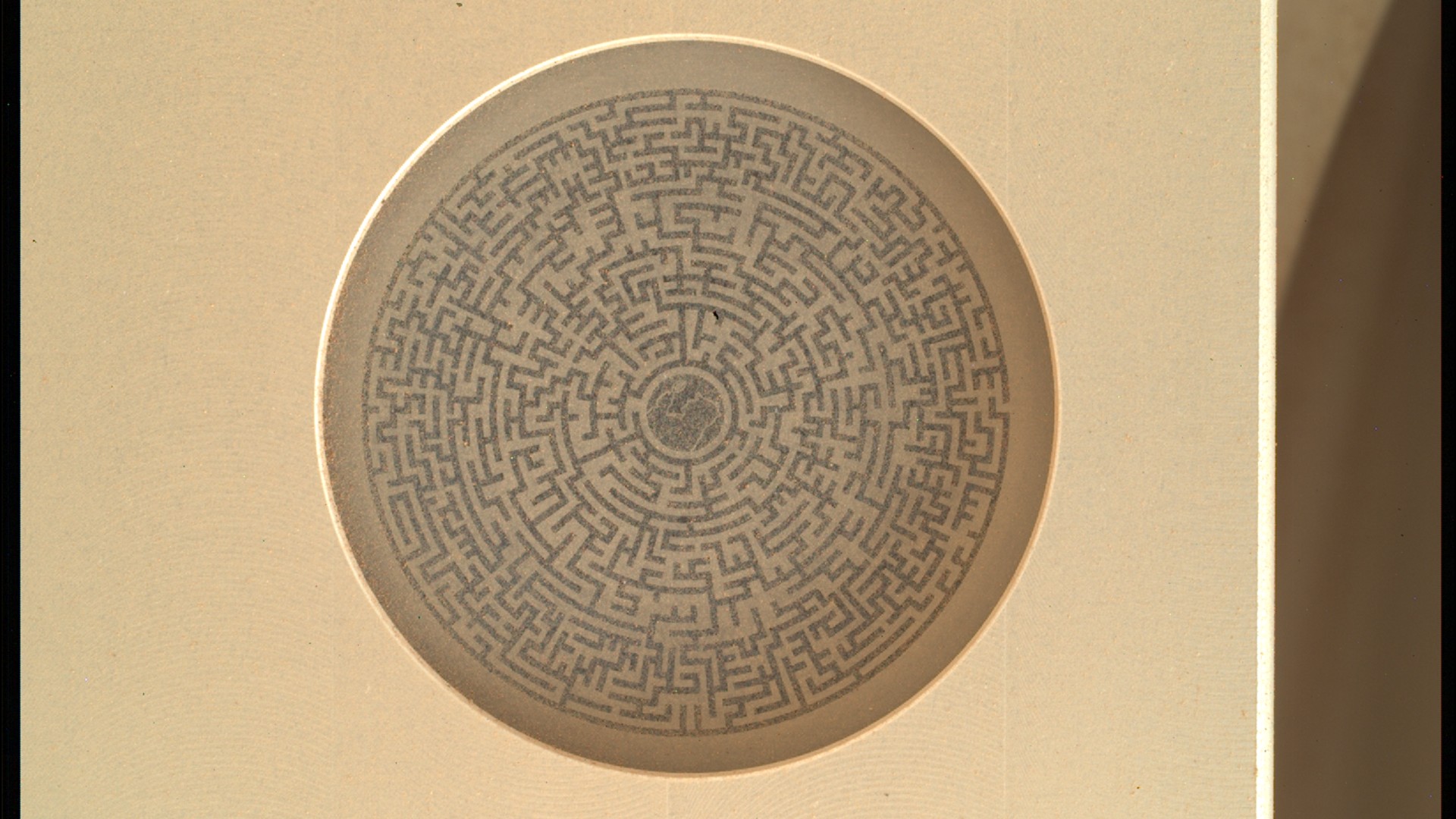Private Rocket Moves to Virginia Launch Pad for Test Flight

A new private rocket rolled out onto its Virginia coast launch pad Saturday (April 6) in anticipation of its first test launch next week.
The Antares rocket — developed by aerospace firm Orbital Sciences Corp. and launching from NASA's Wallops Flight Facility on Wallops Island, Va. — is expected to eventually deliver cargo to the International Space Station as part of a $1.9 billion deal with the space agency. Liftoff is set for Wednesday, April 17.
"With the completion of the Antares roll out today, we are on a clear path to a launch date of April 17, provided there are no significant weather disruptions or major vehicle check-out delays between now and then," Orbital's Antares program manager Michael Pinkston said in a statement.
During the test flight (dubbed A-ONE), Antares is expected to carry a mockup of Orbital's unmanned Cygnus spacecraft to an altitude of 155 miles to 185 miles (250 to 300 kilometers) above the Earth's surface. The Cygnus mockup is a mass simulator of the spacecraft designed to mimic the weight of an actual Orbital Cygnus vehicle, which the company plans to use for unmanned cargo delivers to the International Space Station. [Photos: Orbital's Antares Rocket and Cygnus Capsule]
Antares will also carry more than its simulated payload. The rocket is scheduled to deliver four small satellites into orbit. Three PhoneSats (two PhoneSat 1.0s plus one PhoneSat 2.0) and a nanosatellite called the Dove-1 will fly aboard the rocket.
If all goes according to plan during this test launch, the private spaceflight company will launch a demonstration mission to the space station using the company's first flightworthty Cygnus capsule sometime later this year.
Get the Space.com Newsletter
Breaking space news, the latest updates on rocket launches, skywatching events and more!
Orbital is expected to make eight unmanned supply runs with Cygnus and Antares to the space station under a $1.9 billion contract with NASA. Another private spaceflight firm — the Hawthorne, Calif.-based SpaceX — has already flown two of at least 12 station cargo delivery missions using its Dragon capsule and Falcon 9 rocket as part of a $1.6 billion deal with NASA.
SpaceX's latest Dragon capsule flight visited the space station last month and returned to Earth on March 26, successfully splashing down in the Pacific Ocean after a three-week mission.
NASA plans to rely on private spaceships to ferry American astronauts to and from the International Space Station by 2017. Since the end of the agency's space shuttle program in 2011, NASA has been dependent upon Russian Soyuz spacecraft to ferry astronauts to the station and back home again.
SpaceX is currently developing a manned version of Dragon, and is one of several companies developing crewed spacecraft in hopes of serving NASA's human spaceflight needs.
Aerospace veteran Boeing is developing a crew capsule called CST-100 to launch on an Atlas 5 rocket, while billionaire Jeff Bezo's Blue Origin firm is designing its own rocket to launch its biconic Space Vehicle. Sierra Nevada Space Systems in Colorado, meanwhile, is developing a new reusable space plane, called Dream Chaser, to ferry astronauts to and from low-Earth orbit.
Follow Miriam Kramer @mirikramer and Google+. Follow us @Spacedotcom, Facebook and Google+. Original article on SPACE.com.
Join our Space Forums to keep talking space on the latest missions, night sky and more! And if you have a news tip, correction or comment, let us know at: community@space.com.

Miriam Kramer joined Space.com as a Staff Writer in December 2012. Since then, she has floated in weightlessness on a zero-gravity flight, felt the pull of 4-Gs in a trainer aircraft and watched rockets soar into space from Florida and Virginia. She also served as Space.com's lead space entertainment reporter, and enjoys all aspects of space news, astronomy and commercial spaceflight. Miriam has also presented space stories during live interviews with Fox News and other TV and radio outlets. She originally hails from Knoxville, Tennessee where she and her family would take trips to dark spots on the outskirts of town to watch meteor showers every year. She loves to travel and one day hopes to see the northern lights in person. Miriam is currently a space reporter with Axios, writing the Axios Space newsletter. You can follow Miriam on Twitter.
